SUNY Oswego: 2018 - PRESENT
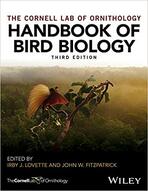
ZOO 376: ORNITHOLOGY
Birds are all around us and are a part of our daily lives. Most people can recognize a few common backyard species, but do not have a scientific understanding of birds. This course is designed to change that by familiarizing students with all aspects of ornithology, including taxonomy, anatomy, behavior, and identification. Lectures will provide a foundation in major ornithological topics, with an emphasis on evolutionary context. Each topic will be supported by discussion of peer-reviewed journal articles. Labs are designed to introduce students to the major taxonomic groups in North America, with an emphasis on New York species. Hands-on lab activities including birding at Rice Creek, mist netting, and local field trips will expose students to the realities of studying birds in the wild.
Birds are all around us and are a part of our daily lives. Most people can recognize a few common backyard species, but do not have a scientific understanding of birds. This course is designed to change that by familiarizing students with all aspects of ornithology, including taxonomy, anatomy, behavior, and identification. Lectures will provide a foundation in major ornithological topics, with an emphasis on evolutionary context. Each topic will be supported by discussion of peer-reviewed journal articles. Labs are designed to introduce students to the major taxonomic groups in North America, with an emphasis on New York species. Hands-on lab activities including birding at Rice Creek, mist netting, and local field trips will expose students to the realities of studying birds in the wild.
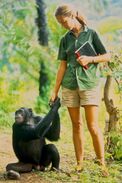
BIO 492: BEHAVIORAL ECOLOGY RESEARCH
This class is all about learning how to conduct animal behavior research. Students have the freedom to design and implement their own semester-long project on behavior of any focal species, including humans! Emphasis is on the process of research rather than producing a polished final product. Students will gain experience in study design, data collection, analysis, science writing, and oral presentation skills.
This class is all about learning how to conduct animal behavior research. Students have the freedom to design and implement their own semester-long project on behavior of any focal species, including humans! Emphasis is on the process of research rather than producing a polished final product. Students will gain experience in study design, data collection, analysis, science writing, and oral presentation skills.
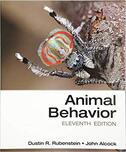
BIO 325: BEHAVIORAL BIOLOGY
This class provides a foundation in animal behavior in an ecological and evolutionary context. We cover everything from proximate (How do behaviors develop? How are they produced and coordinated?) to ultimate levels of analysis (What is the function of a particular behavior? How do behaviors evolve over time?). Students also spend time reading and discussing current behavioral research. Lab activities give students a chance to get outside and conduct their own behavioral research.
This class provides a foundation in animal behavior in an ecological and evolutionary context. We cover everything from proximate (How do behaviors develop? How are they produced and coordinated?) to ultimate levels of analysis (What is the function of a particular behavior? How do behaviors evolve over time?). Students also spend time reading and discussing current behavioral research. Lab activities give students a chance to get outside and conduct their own behavioral research.
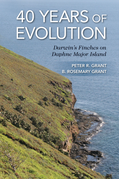
BIO 425: EVOLUTION
This is an upper-level Evolution seminar based around readings from Peter and Rosemary Grant's phenomenal book 40 Years of Evolution and scientific papers. Students write a literature review paper on an evolutionary topic of their choosing, give an oral presentation, and lead discussions of scientific papers.
This is an upper-level Evolution seminar based around readings from Peter and Rosemary Grant's phenomenal book 40 Years of Evolution and scientific papers. Students write a literature review paper on an evolutionary topic of their choosing, give an oral presentation, and lead discussions of scientific papers.
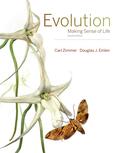
BIO 220: DIVERSITY OF LIFE
This is a mid-level Evolution lecture covering topics ranging from the origin of life on earth to macroevolution and everything in between! If you want to sit in a big lecture hall and listen to me yammer on about genetic drift, stabilizing vs. disruptive selection, and coevolutionary arms races then this is the class for you!
This is a mid-level Evolution lecture covering topics ranging from the origin of life on earth to macroevolution and everything in between! If you want to sit in a big lecture hall and listen to me yammer on about genetic drift, stabilizing vs. disruptive selection, and coevolutionary arms races then this is the class for you!
UNIVERSITY OF MIAMI: 2015

ECOLOGY AND EVOLUTION IN THE GALÁPAGOS ISLANDS
In Fall 2015, I thought a three-week module as part of the University of Miami's "UGalápagos" semester-long study abroad program. I taught sixteen undergraduates about topics such as natural selection, sexual selection, adaptive radiation, niche partitioning, community interactions, and phylogenetics. In-class lecture time was limited, I instead focused the course mainly on field investigations and hands-on lab activities. For example, one assignment challenged the students to use a real world dataset I had collected on morphology of various Darwin's finch species to analyze a question of their choosing. For their final project, students designed and implemented independent field projects on topics such as aggressive behavior in damselfish and sexual selection in the indigenous human population. This class was an absolute blast to teach.
In Fall 2015, I thought a three-week module as part of the University of Miami's "UGalápagos" semester-long study abroad program. I taught sixteen undergraduates about topics such as natural selection, sexual selection, adaptive radiation, niche partitioning, community interactions, and phylogenetics. In-class lecture time was limited, I instead focused the course mainly on field investigations and hands-on lab activities. For example, one assignment challenged the students to use a real world dataset I had collected on morphology of various Darwin's finch species to analyze a question of their choosing. For their final project, students designed and implemented independent field projects on topics such as aggressive behavior in damselfish and sexual selection in the indigenous human population. This class was an absolute blast to teach.
CORNELL UNIVERSITY: 2013

FLOCK AND AWE: EXTREME ORNITHOLOGY
In the back-to-back semesters of Spring and Fall 2013, I was an independent instructor for a First-Year Writing Seminar at Cornell called "Flock and Awe: Extreme Ornithology". I designed this course with two main goals: 1) to teach young students about avian biology and expose them to the opportunities for bird research at Cornell, and 2) to teach young students about science writing and how it differs from the more traditional "English" writing style. I focused on various "extreme" facets of ornithology rather than one particular subject, to expose the students to the spectacular diversity of traits and behaviors in the bird world. Examples include the extravagant sexual courtship behavior of the club-winged manakin, the incredible long distance migration of bar-tailed gotwits, and the extensive sexual conflict between some male and female waterfowl species. The course consisted primarily of six essays that each required multiple drafts on which the students got feedback from myself and their peers. Some of the writing assignments included comparing and contrasting scientific papers, a popular science article where students had to translate a scientific conference talk for a lay audience, and a grant proposal assignment where students could choose their own ornithology topic and develop a research plan. In April 2014 I won the Cornell College of Arts and Sciences Dean's Prize for Distinguished Teaching in recognition of the success of this course.
In the back-to-back semesters of Spring and Fall 2013, I was an independent instructor for a First-Year Writing Seminar at Cornell called "Flock and Awe: Extreme Ornithology". I designed this course with two main goals: 1) to teach young students about avian biology and expose them to the opportunities for bird research at Cornell, and 2) to teach young students about science writing and how it differs from the more traditional "English" writing style. I focused on various "extreme" facets of ornithology rather than one particular subject, to expose the students to the spectacular diversity of traits and behaviors in the bird world. Examples include the extravagant sexual courtship behavior of the club-winged manakin, the incredible long distance migration of bar-tailed gotwits, and the extensive sexual conflict between some male and female waterfowl species. The course consisted primarily of six essays that each required multiple drafts on which the students got feedback from myself and their peers. Some of the writing assignments included comparing and contrasting scientific papers, a popular science article where students had to translate a scientific conference talk for a lay audience, and a grant proposal assignment where students could choose their own ornithology topic and develop a research plan. In April 2014 I won the Cornell College of Arts and Sciences Dean's Prize for Distinguished Teaching in recognition of the success of this course.
CORNELL UNIVERSITY: 2012

ANIMAL COMMUNICATION
In Spring 2012, I was a TA for the Cornell Neurobiology and Behavior course "Animal Communication" taught by Drs. Mike Webster and Rob Raguso. In this course students learned about the mechanistic underpinnings of multiple communication modalities, as well as the different ways they function in communication. My duties as a TA involved administering and grading tests as well as running several discussion sections per week. In discussion sections, I would give short informal lectures, break the class into small groups to discuss class materials or scientific papers they had read, and lead hands-on activities like guessing the chemical composition of different odors and analyzing animal sounds using spectrograms.
In Spring 2012, I was a TA for the Cornell Neurobiology and Behavior course "Animal Communication" taught by Drs. Mike Webster and Rob Raguso. In this course students learned about the mechanistic underpinnings of multiple communication modalities, as well as the different ways they function in communication. My duties as a TA involved administering and grading tests as well as running several discussion sections per week. In discussion sections, I would give short informal lectures, break the class into small groups to discuss class materials or scientific papers they had read, and lead hands-on activities like guessing the chemical composition of different odors and analyzing animal sounds using spectrograms.
